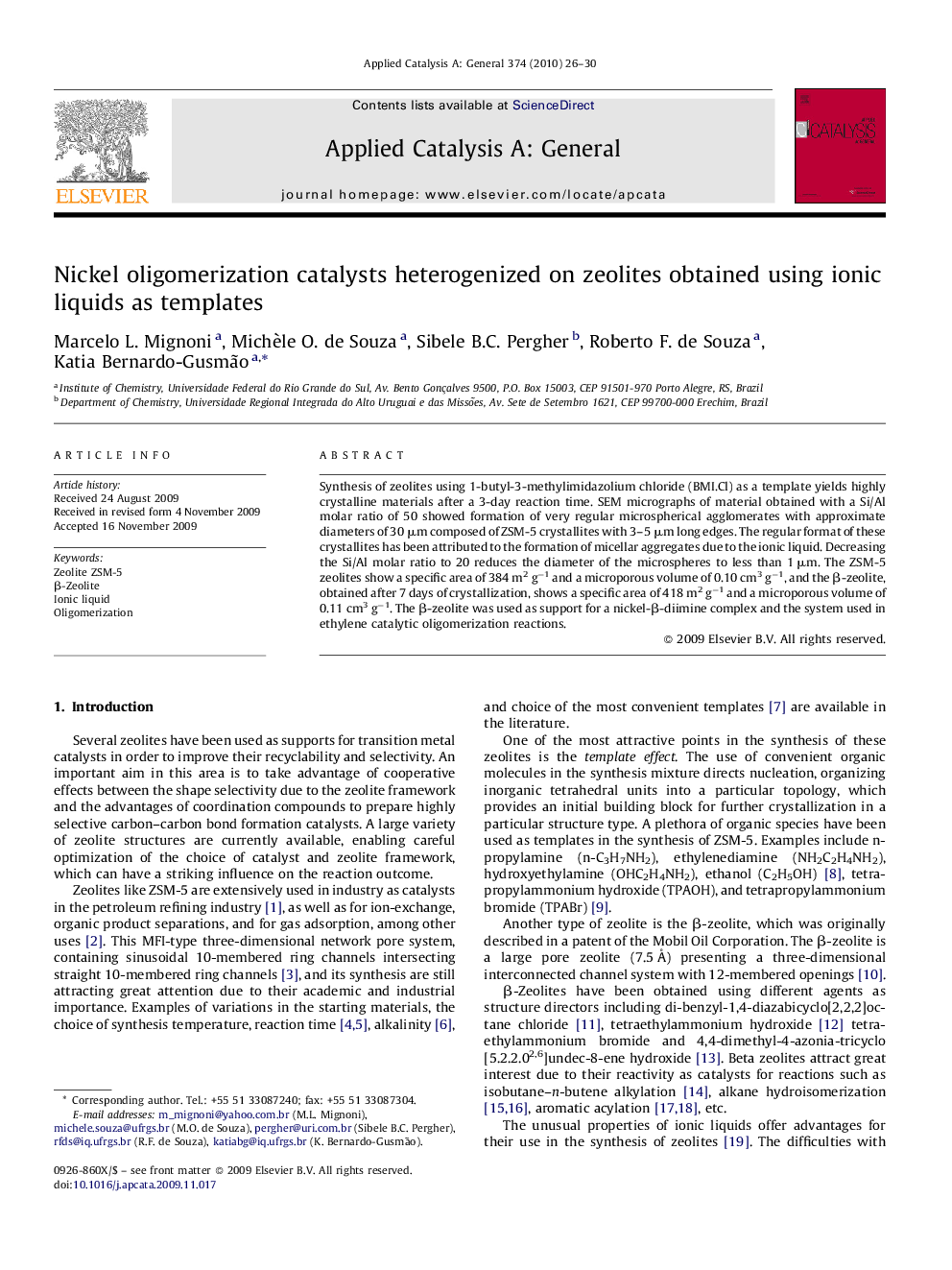| Article ID | Journal | Published Year | Pages | File Type |
|---|---|---|---|---|
| 42132 | Applied Catalysis A: General | 2010 | 5 Pages |
Synthesis of zeolites using 1-butyl-3-methylimidazolium chloride (BMI.Cl) as a template yields highly crystalline materials after a 3-day reaction time. SEM micrographs of material obtained with a Si/Al molar ratio of 50 showed formation of very regular microspherical agglomerates with approximate diameters of 30 μm composed of ZSM-5 crystallites with 3–5 μm long edges. The regular format of these crystallites has been attributed to the formation of micellar aggregates due to the ionic liquid. Decreasing the Si/Al molar ratio to 20 reduces the diameter of the microspheres to less than 1 μm. The ZSM-5 zeolites show a specific area of 384 m2 g−1 and a microporous volume of 0.10 cm3 g−1, and the β-zeolite, obtained after 7 days of crystallization, shows a specific area of 418 m2 g−1 and a microporous volume of 0.11 cm3 g−1. The β-zeolite was used as support for a nickel β-diimine complex and the system used in ethylene catalytic oligomerization reactions.
Graphical abstractSynthesis of zeolites using 1-butyl-3-methylimidazolium chloride (BMI.Cl) as a template yields highly crystalline materials after a few days reaction time. Depending on the Si/Al ratio the system crystallizes differently, giving selectively ZSM-5 or β-zeolite structures. The β-zeolite was used as support for a nickel-β-diimine complex and the system used in ethylene catalytic oligomerization reactions.Figure optionsDownload full-size imageDownload high-quality image (91 K)Download as PowerPoint slide
